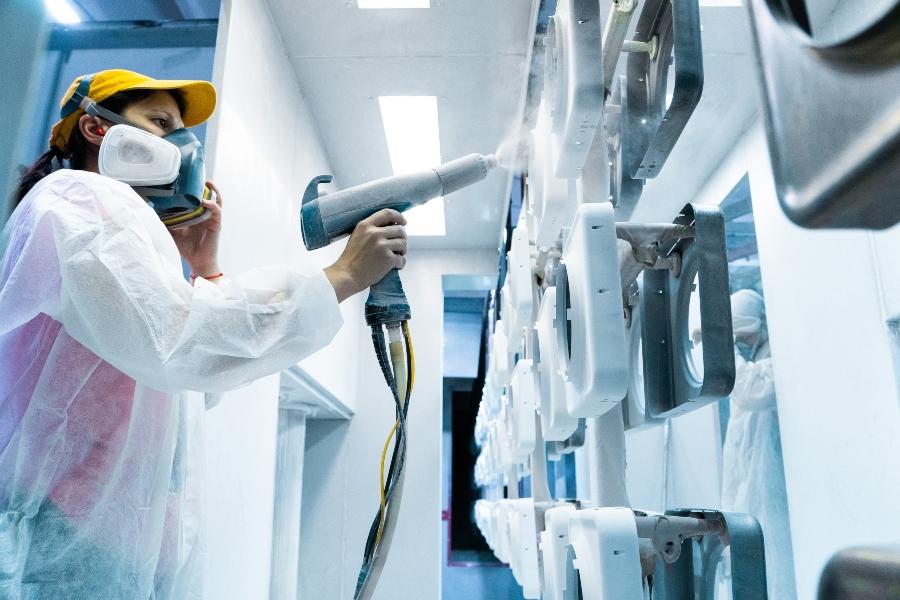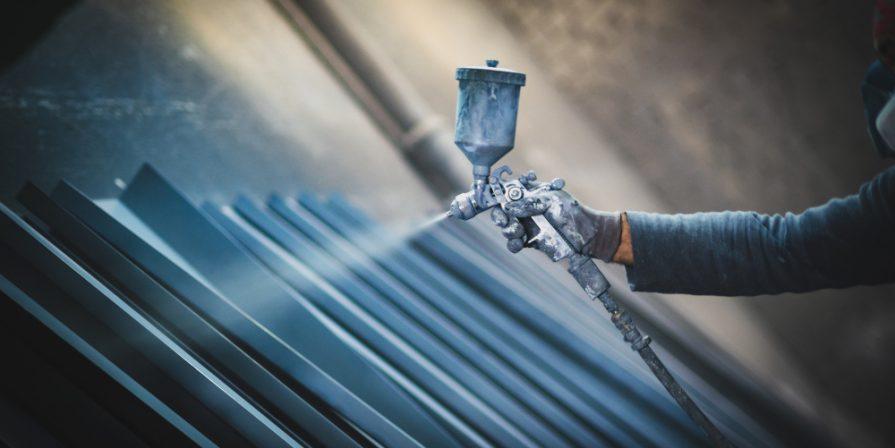The Eiffel Tower is the symbol of Paris. Around 130 years ago, this steel structure was completed just in time for the World’s Fair and has lost none of its fascination to this day. More than 7 million visitors tour the tower, built under the direction of Gustave Eiffel, every year. The Eiffel Tower consists of over 18,000 individual metal parts, and the steel structure weighs about 16.1 million pounds (≈ 7,300 metric tons). To protect it from its worst enemies—weather, oxygen, and moisture—up to 132,000 pounds (≈ 60 metric tons) of paint are required every seven years, which not only provides a fresh coat but above all, serves as corrosion protection.
For this outer layer to fulfill its purpose and effectively protect the underlying steel, a strong bond between the metal surface, the intermediate, and the top coating is essential.
An effective surface treatment therefore plays—quite literally—a supporting role. Phosphating, and in the case of iron and steel, iron phosphating, is often the method of choice.

The most common metals used for construction in the manufacturing industry
From shipbuilding to large-scale construction, automotive, and aerospace industries—all rely on steel and iron to varying degrees. These two metals, differing mainly in quality, are among the most widely used metals worldwide, with experts estimating their share at about 95% of all processed metals. Despite advantages such as high strength, good machinability and formability, and recyclability, iron—and by extension, steel—has one major drawback: it reacts with oxygen in the air to form iron oxide. This process, commonly referred to as rusting, is accelerated by environmental factors such as moisture or salts.
The National Association of Corrosion Engineers (NACE) estimates that the costs of corrosion damage in a highly industrialized country can amount to 3–6% of gross domestic product. That is why extensive resources have always been invested in corrosion protection to safeguard structures and constructions over the years.
The International Organization for Standardization (ISO) has established its own set of rules in ISO 12944, which defines standards and technical regulations for protecting steel structures with various coating systems. One of the most important processes in surface engineering is iron phosphating.

Comprehensive surface treatment is the key to corrosion protection
To effectively protect a steel or iron part from corrosion, a barrier is required that keeps oxygen, moisture, and salts (electrolytes) away as completely as possible. In most cases, a coating is chosen for this purpose. It is essential that the coating adheres well to the metal and forms a durable bond between paint and metal. For good adhesion, two conditions must be met:
(1) The metal surface must be absolutely clean and flawless.
(2) The metal surface must be properly pretreated. A common pretreatment method in surface engineering is phosphating.
Phosphating is a form of chemical surface treatment
In phosphating, the metal surface reacts with an aqueous solution of alkali phosphates and free phosphoric acid. Surface engineering distinguishes between two methods: the non-coating and the coating processes. In both methods—also called conversion processes—layers form, differing only in their chemical composition.
The non-coating process: iron phosphating
During iron phosphating, various reactions take place on the surface simultaneously.
The workpiece is immersed in a phosphating solution consisting of free phosphoric acid and acidic alkali phosphates, such as sodium dihydrogen phosphate.
The pH of the solution is in the acidic range between 3.5 and 6. In the first step, which is the pickling reaction, the metal surface is attacked, and iron ions are released into solution while hydrogen develops. In the second step, divalent iron ions react with the hydrogen phosphates in solution to form insoluble iron (III) phosphates and, in smaller amounts, iron (II) phosphates and iron oxides. These reactions occur both sequentially and in parallel.
On the surface of the iron metals, an amorphous mixture of iron phosphates, iron oxides, and iron hydroxides forms. Layer thicknesses between 6 and 315 microinches (≈ 0.15 to 8 micrometers) can be achieved. Most importantly, these layers provide an excellent base for subsequent coatings because they form an amorphous, microporous or microcapillary structure. This greatly facilitates the adhesion of subsequent coatings, such as paint.
The phosphating solution also contains oxidizing agents such as bromates, chlorates, nitrates, or molybdates. These react with the hydrogen released during pickling and oxidize it to water, thereby preventing blockage of the metal surface by hydrogen bubbles. Alternatively, organic compounds such as m-nitrobenzenesulfonate or nitroguanidine can also be used as oxidizers.
The coating process – phosphating
The difference between the coating process and iron phosphating is that instead of iron phosphates, zinc phosphates or mixed zinc-iron and zinc-manganese phosphates form on the surface. The phosphating solutions contain the corresponding cations, which deposit as phosphate compounds on the iron surface. This process also consists of two steps—pickling and subsequent layer formation. As with iron phosphating, oxidizing agents are added that react with the hydrogen released during pickling. In the coating process, somewhat thicker layers are formed than in pure iron phosphating, and the protective effect is therefore considered slightly higher.
Iron phosphating in practice
Phosphating is normally conducted in several steps and thus in separate baths. Spray techniques are preferable to immersion because they achieve much better cleaning results. The pickling reaction, which usually occurs separately to remove unwanted oxides, can be combined with phosphating in the same bath during iron phosphating. This combined step takes on average 1–2 minutes in the spray process and about 3–5 minutes in the immersion process.
These times are generally sufficient to produce a conversion layer of adequate thickness. Bath temperatures are maintained at 104–140 °F (≈ 40–60 °C). The parts are then rinsed, first in an unheated tap water bath and then in a bath with fully demineralized water. This thoroughly removes any remaining residues and soluble salts from the surface.
Advantages of iron phosphating compared to other surface treatments
Compared to other surface treatments, iron phosphating has several advantages. For example, it increases the elasticity of the material and improves the sliding properties of the metal surface. This can be beneficial for subsequent processes such as the cold forming of steel or assembly. In addition, the formation of the conversion layer alone often provides sufficient corrosion protection, at least in the short term. If the workpieces are later used only indoors and not exposed to extreme conditions, this protection may already be adequate.
In all other cases, it provides protection at least until the next process step, and the protection can be further improved by waxing or oiling. Finally, all workpieces with a metal phosphate layer have high electrical resistance. This allows, for example, electrical steel sheets to be insulated from one another.
This applies to all phosphating methods and is not limited to iron phosphating. However, iron phosphating has the advantage of being a relatively low-cost process in surface engineering and is therefore widely used.
 Kluthe Magazine
Kluthe Magazine


